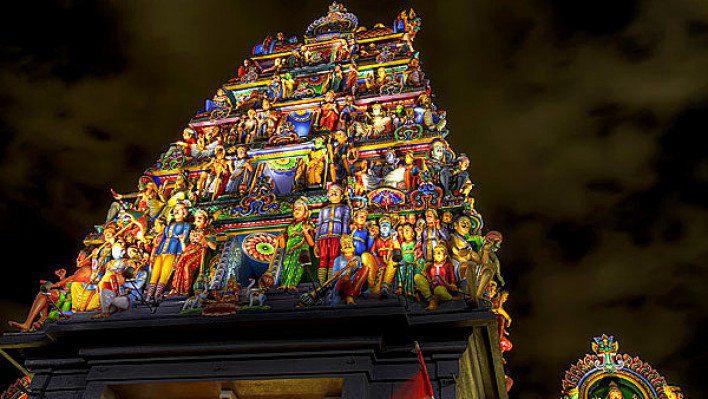Singapore is an amazing city-state that annually attracts thousands of seasoned tourists who appreciate the exotic culture of Asia and are keen on unusual entertainment. In one of the largest districts of the city – Chinatown, which impresses with its frantic pace and a myriad of cafes and hostels – is cozily located the oldest Hindu temple in Singapore, Sri Mariamman. This majestic and very colorful structure is rightfully considered one of Singapore’s main historical attractions.
History
It is well known that Singapore was a British colony for a long time. However, following the ubiquitous Englishmen, Indians under the leadership of Naraina Pillai decided to settle on local lands in 1819. This outstanding official quickly earned the respect of the Indian community by organizing a construction company and textile trade on the island.
The residents of India have long been known for their strict adherence to religious rituals, and therefore Naraina decided to build a Hindu temple on Singaporean soil. Finding a suitable plot was not easy. The initially proposed site by the British authorities was completely unsuitable as it did not have any source of fresh water, which is abundantly used in religious rituals.
A suitable piece of land was only acquired in 1823, and the construction itself took about four years. The first building was made entirely of wood, and a statue of Mariamman – the goddess mother, especially revered by simple peasants – was immediately installed in front of the entrance. This statue has happily survived to this day. The same cannot be said about the wooden building – it was replaced by a brick one in the early 1840s.
However, the parts of the building that have reached modern times were built closer to the 1860s. The first gopuram – a gateway tower typical of all Hindu temples – was built in 1903. At that time, it consisted of three levels, but twelve years later, the gopuram was rebuilt, adding three more levels, and it has reached us in this form.
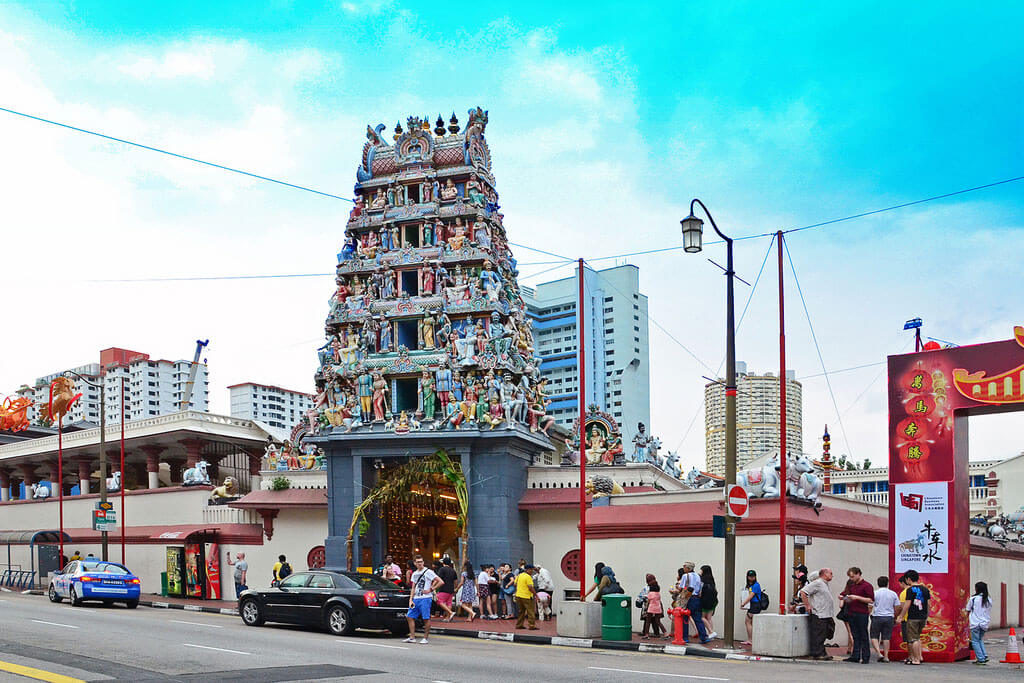
For a long time, the temple housed Tamil immigrants (a people from South Asia, most of whom live in India). They stayed in Sri Mariamman while settling on the new land, finding suitable housing and work. No one ever drove them out or hurried them, giving them time to adapt to their new life. Moreover, this was the only temple with the right to conduct wedding ceremonies, and vows of love and fidelity were often heard within its walls. Today, Sri Mariamman is still operational.
Description
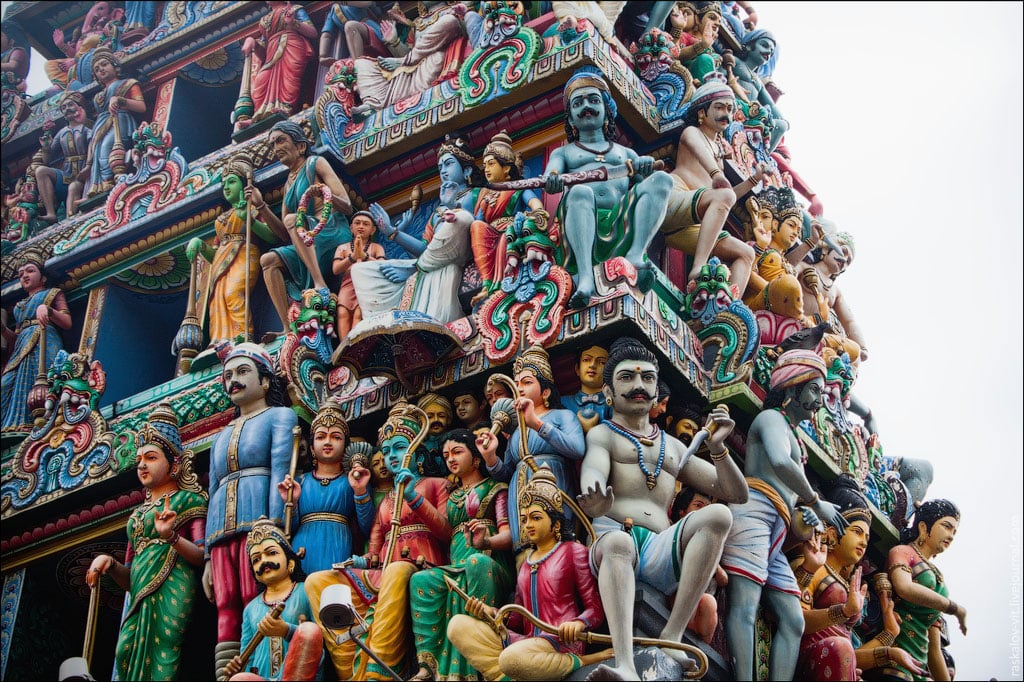
Even if you don’t know the exact address, while walking through Chinatown, you are unlikely to miss Sri Mariamman. Its facade is richly decorated with figurines of Indian gods, compactly located on six tiers of the gopuram. The interior decoration of this holy place is no less impressive than the exterior. The spacious room is adorned with white columns, and the walls are artfully painted with colorful images of divine beings and scenes from the oldest religion. The main altar rises behind the colonnade arcade. Naturally, the main sanctuary is dedicated to Mariamman, but other divine beings are also given attention.
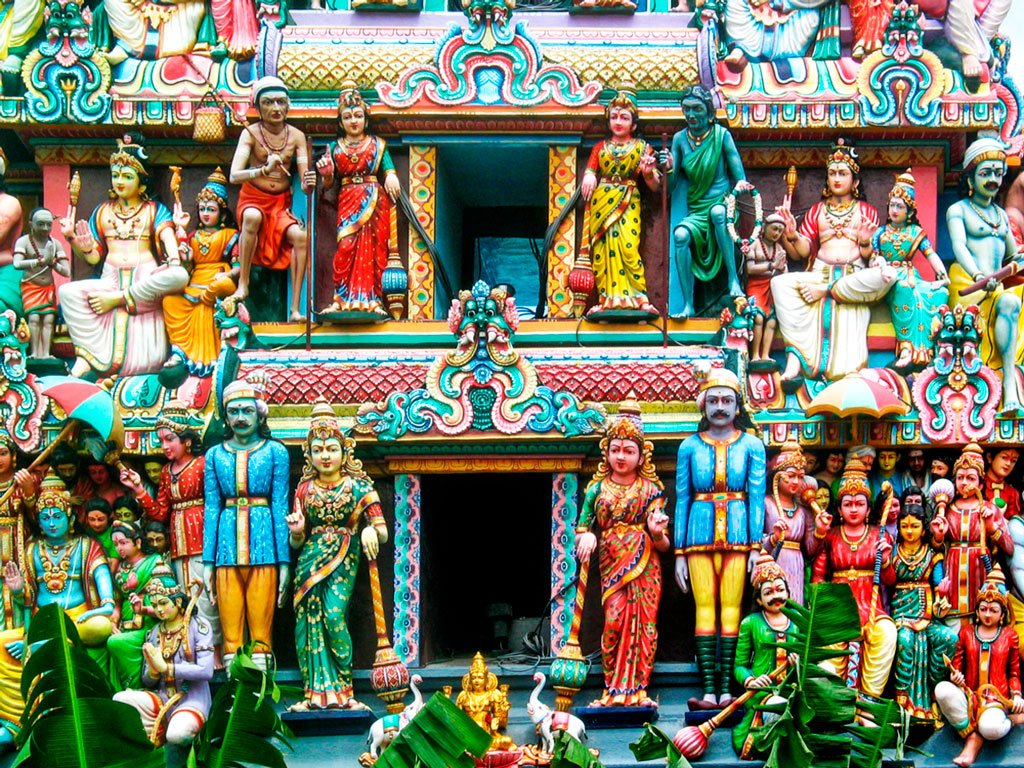
Along the perimeter of the main hall are sacred places for the following gods: Ganesha (the patron of prosperity and wisdom), Durga (the powerful warrior who protects both gods and ordinary people from demons), Iravan (a hero deeply revered in the Kuttantavar tradition of ancient Indian epics), and Draupadi (the earthly incarnation of Vishnu’s wife). The shrine of Draupadi is the second most important in the temple. To the left of Draupadi are the five Pandavas – protagonists of the “Mahabharata” (the saga of the descendants of Bhavata – the legendary king). The temple also features sculptures of yoni, a symbol of the female principle, and lingam, an embodiment of the divine creative force. The flagpole installed at the entrance is also of great importance. When a celebration or religious ritual is upcoming, a warning flag is raised on it.
Those tourists who find themselves in Singapore in October are especially lucky. It is in the tenth month of the year that the grand festival – Thimithi – is held. This is the time to honor Draupadi, who, according to ancient Indian legends, walked barefoot over hot coals, proving her purity. Every year, hundreds of Hindus come to the temple and try to repeat Draupadi’s feat, thus atoning for their sins. The spectacle is so impressive that thousands of people come to watch it.
The purification ritual is preceded by a stunning procession: from the nearby Sri Srinivasa Perumal Temple to Sri Mariamman, hundreds of people follow the priest. The priest is the first to cross the pit filled with coals, followed by the believers. Hinduism holds that if a person has faithfully observed fasts and not sinned, the fire will not harm him. It is important to note that only men are allowed to walk the fiery path.
Tips for Tourists Before Visiting
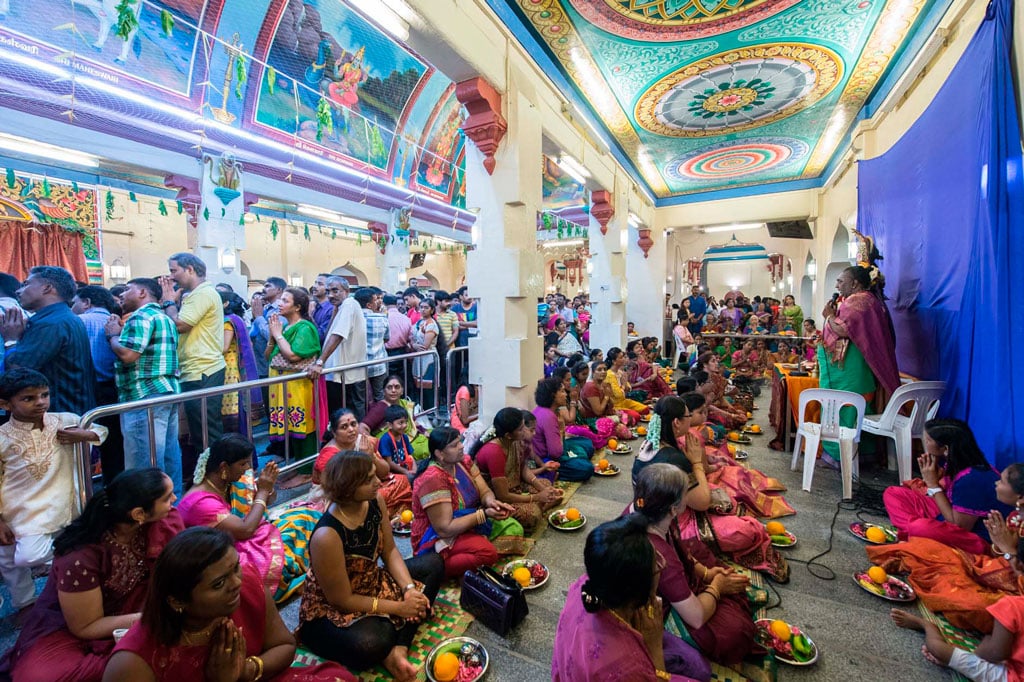
Every tourist deciding to visit Sri Mariamman should understand that the temple is not just another historical building but a keeper of religious beliefs and a dwelling place of the gods. Therefore, before the actual visit, it is important to get acquainted with the following useful tips:
- Hindu tradition implies that you must greet and bid farewell to the gods. For this purpose, small bells are hung before the entrance to the temple, and you should ring one at the beginning and end of your visit. This way, you inform the heavenly beings that you are entering and leaving the temple.
- Representatives of any religious denomination can visit the temple, but they must do so strictly barefoot.
- Photography inside the building is allowed, but for an additional fee.
- There is a so-called Main Altar in the temple, where visitors are not allowed.
How to Get to Sri Mariamman
Temple address: 244 South Bridge Road
You can get there by metro (Chinatown station, blue line) or by bus (Sri Mariamman stop, routes 166 and 197).

